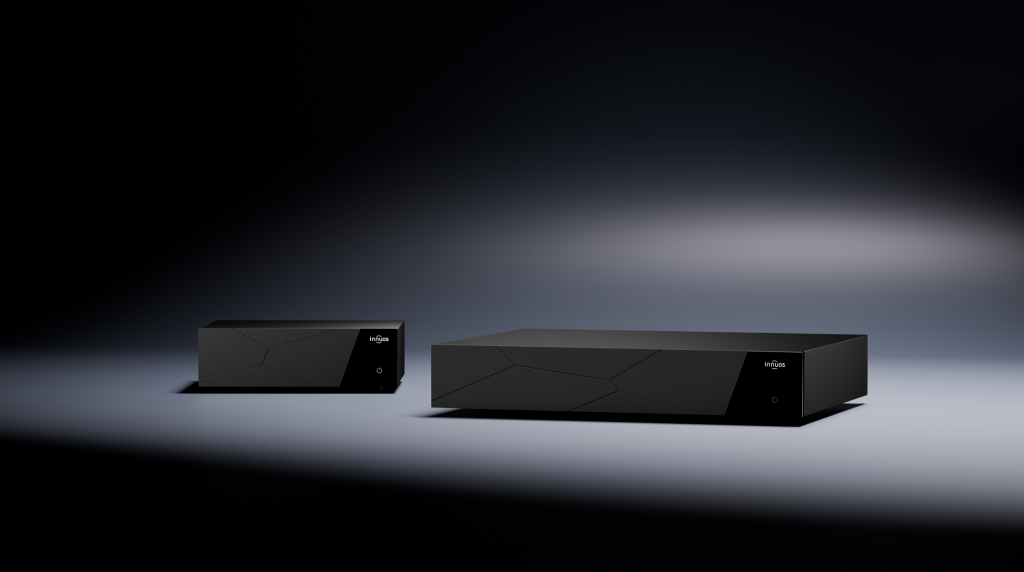The evolution of streaming?
Music streaming initially spun out of the multi-room installation environment with the need to share a music library over various locations. In the early days, music needed to be compressed to fit into the expensive and limited amount of storage available (think iPod). Over time, the need for compression has diminished and, in the hands of teams at Linn, Naim and others, streaming has evolved into a technically better way to play copied CDs in uncompressed form with considerable operational benefits.
Whilst Naim developed their own ripper / servers, Uniti Serve, followed by Uniti Core, Linn left this void to be filled by other third party vendors. Japanese maker, Melco*, spotted this opening and developed some high quality music servers which for a long time came in Linn dimensioned three quarter width alloy casework.
Within a few years of this, a company based in Portugal called Liv Zen utilised some existing software called Vortexbox to manufacture low cost but effective ripper / storage devices. The whole premise at this time was to offer music stored on a network and accessed via music player utilising Universal Plug and Play technology (UPnP).
Melco’s evolution was along this path, manufacturing what has become predominately high end music servers. Naim players from a decade or so ago were very sensitive to the way the data was served and, certainly to our ears, the Melco’s justified their extra cost very easily.
In the meantime, on-line music services have improved beyond recognition. Qobuz in particular seem to have grasped the changing world. Indeed, a huge issue is that services such as Qobuz simply aren’t bad enough! Besides this, innumerable listeners still use highly compressed Spotify services so standards can be quite low.
With a Melco music server, music downloads purchased from the Qobuz site can be set to automatically populate your music server. Interestingly, the sound quality of files downloaded this way is noticeably cleaner and more vibrant than the same data downloaded via a computer and dragged across the network to the store,
Roll forward to 2025 and with, say a Naim ND555, the Melco N1 still beats the alternatives in our view. The Naim Uniti Core, especially when equipped with the right SSD drive evolved via various software upgrades into a formidable device at an agreeable price that runs it closer than seems reasonable. Sadly, the Core has now been withdrawn by Naim due to a combination of low demand and restricted parts availability. Very few remain.
In parallel to all of this, a huge amount has been going on at LIV Zen. For a start, they have quietly grown into a far more sophisticated operation called Innuos. A couple of years ago we were trying to reconcile why we prefer the sound of Melco units when feeding (mainly Naim) network players and yet find an Innuos to sound preferable while running directly through a good quality DAC such as those from Chord Electronics. We’ve therefore been suggesting the Innuos products more for ‘DAC” duties than network storage.
Responding to the decline in demand for music storage, it’s fair to say that Innuos have been thinking very differently.
Still based in Portugal, they now have a sizeable team of software engineers and their ‘Sense’ control ‘app’ is, we think, a game changer. Rather than serve files to a network player, the Innuos devices actually are the player and music data storage is optional and pretty much incidental.
The new Stream 1 + 3 player / servers are modular designs with a choice of how much, if any, SSD storage you have, the ability level of the DAC or whether you simply want a digital output. Even for this last option there is some choice over the quality and type of digital feed.
If you do have in-built storage, you can elect to download directly from Qobuz, similarly to the arrangement with Melco, and the control of this via the Sense App is very intuitive indeed. Their control App allows you to route the audio to other devices in the home in a very similar way to Roon and, as with Roon, it’s brand – agnostic meaning that you can share the same music across different product ranges. As an added bonus, Sense is free to download and is arguably sonically more transparent too. There are no ongoing costs.
Innuos may have seven software engineers but they’ve been working hell for leather on the new products and the opportunity to hear the new stream players only occurred recently.
We should have our demonstration units within a month or so and, as the slightly breathless tone of this article hints, we’re really looking forward to getting our hands on them.
*As of August 2025, Melco is being renamed as DELA
Alastair, signals, August 2025

